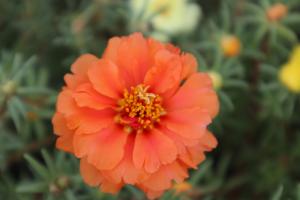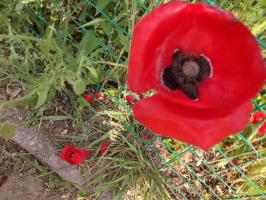There are quality problems in seeds
At present, there are many flower seeds on the market. When purchasing, whether domestic seeds or imported seeds, flower friends should pay attention to the production date and shelf life indicated on the packaging bag, and do not buy seeds that are not indicated
Most of the expired seeds have lost their vitality and will not sprout. In addition, when purchasing seeds, flower farmers should have a basic understanding, such as whether the seeds purchased are biennial flowers, perennial flowers, spring flowers or autumn flowers. Generally speaking, seeds are sown in summer and spring; Seeds sown in autumn usually bloom in spring and summer (except woody flowers). If the sowing date is reversed and there is no certain off-season cultivation conditions, it is difficult to achieve the expected purpose of flowering. We should be more cautious when buying flower varieties that have never been raised

Inadequate seed treatment
Different seed treatment methods should be adopted for the seeds of different flowers
Seeds that are easy to germinate can be soaked. For example, a bunch of red seeds can be soaked in warm water at room temperature of 40 ℃ for one day and night, and can be sown after washing
Hard seeds, such as asparagus, peony, jiulixiang, bairihong, Daphne odora, etc., are best soaked in hot water at 40 ℃ for about 48 hours before sowing into the pot soil. They can sprout and grow after 20 ~ 30 days
For pearl plum and Bauhinia, which have short dormancy period and are easy to germinate, seeds can be directly sown after soaking in warm water at 40 ℃ ~ 60 ℃ for 24 ~ 48 hours
Some flower seeds need a certain period of low temperature treatment to promote post ripening, break the dormancy of seed embryo and germinate, such as clove, Chimonanthus and some Autumn Sown herbal flowers
Some flowers have the characteristics of double dormancy of radicle and hypocotyl, that is, their radicle needs to go through a high temperature stage of 25 ℃ ~ 32 ℃ for 1 to 2 months or more to break the dormancy, such as the seeds of tassel, pod fan and peony

Neglect the proper temperature for seed germination
In addition to certain water conditions, the germination of dry seeds must also have a certain temperature
For example, the suitable temperature for snowball germination of Cruciferae must be 5 ℃ ~ 20 ℃, the suitable temperature for Gerbera germination must be 20 ℃ ~ 25 ℃, and the suitable temperature for primrose germination must be within 15 ℃ ~ 18 ℃. Too high or too low temperature will affect the emergence rate of flowers, even lead to the occurrence of mildew and rot of seeds, and greatly reduce the germination rate and seedling rate

Unreasonable sowing date
Seeds with large particles, solid skin or containing oil, such as rose, rose, pomegranate, kumquat, Magnolia and other flower seeds, are suitable for sowing in autumn
Seeds with small particles and thin skin, such as chrysanthemum, asparagus, Impatiens, Centaurus, Lingxiao flower and other flowers, are suitable for sowing in late spring
Seeds that need high temperature to germinate should be sown in time after maturity, such as Cyclamen, guayeju, zhudinghong and other flowers should be sown in early summer

Sowing quality problem
Flower sowing has two forms: open field sowing and pot sowing. Either way requires loose and ventilated soil, fine particles and good drainage. It is better to use fertile soil rich in humus nutrients and moderate acid and alkali, which is conducive to seed emergence
The specific sowing methods include sowing, drill sowing and hole sowing. Sufficient water shall be poured before sowing, and plastic film shall be covered after sowing to prevent the soil from being too dry and affecting the germination and emergence of seeds
The sowing depth is generally 2.5 times of the flower grain diameter. The small seeds of cockscomb, August chrysanthemum, four seasons Begonia and melon leaf chrysanthemum shall be mixed with fine sand and seeds before sowing
During seed germination after sowing, attention should be paid to water spraying for moisturizing, but water spraying should not be too much to prevent Retting of seeds and fibrous roots of seedlings

Ignore the influence of light
After flower seeds are sown, appropriate light can increase the soil temperature and induce seed germination, especially for seeds to break through the seed coat and expose roots and buds, which not only affects the emergence rate of seeds, but also directly related to whether they can grow into good and strong seedlings
Therefore, from sowing to transplanting, we should try to meet the needs of light for flower growth, and the light intensity is a gradual transition from dark to weak light and then to natural light< span>

 how many times do yo...
how many times do yo... how many planted tre...
how many planted tre... how many pine trees ...
how many pine trees ... how many pecan trees...
how many pecan trees... how many plants comp...
how many plants comp... how many plants can ...
how many plants can ... how many plants and ...
how many plants and ... how many pepper plan...
how many pepper plan...































